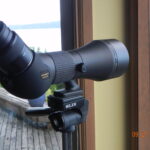About Me

About jansbird
 I am a retired teacher. I taught high school physics and for the last 16 years was a high school principal. In my first 10 years of retirement I taught part-time at the University of Puget Sound and ran a small non-profit school reform shop called Coalition of Essential Schools Northwest. At UPS I taught teachers how to be principals and at CES Northwest I helped schools implement the principles of the Coalition of Essential Schools, a national school reform program. Now I am really retired and pursuing my other interests full time. I have always been interested in natural history, the identification of living things. My formal science training is in Physics. I have very little formal education in nature but I have always enjoyed nature and living outside and being interested in what I see there. I like water and beaches and over the years have learned about most of the creatures found there. My interest in birds started by watching herons and ducks at my family cabin on Whidbey Island. That led to learning to identify other kinds of birds. I now know most of the local birds. When I moved to Gig Harbor I began keeping a log of the ducks and birds I saw coming and going. This blog is primarily to publish the data collected in those logs. I can also now keep more close track of my birds. I do not feed the local birds because I have 2 cats who prey on them. So I don’t see as many local birds as I do ducks. But I hope to expand my observations of the birds and learn who they all are. And I hope to include my friends who are also interested in birds in keeping track of their bird sightings.
I am a retired teacher. I taught high school physics and for the last 16 years was a high school principal. In my first 10 years of retirement I taught part-time at the University of Puget Sound and ran a small non-profit school reform shop called Coalition of Essential Schools Northwest. At UPS I taught teachers how to be principals and at CES Northwest I helped schools implement the principles of the Coalition of Essential Schools, a national school reform program. Now I am really retired and pursuing my other interests full time. I have always been interested in natural history, the identification of living things. My formal science training is in Physics. I have very little formal education in nature but I have always enjoyed nature and living outside and being interested in what I see there. I like water and beaches and over the years have learned about most of the creatures found there. My interest in birds started by watching herons and ducks at my family cabin on Whidbey Island. That led to learning to identify other kinds of birds. I now know most of the local birds. When I moved to Gig Harbor I began keeping a log of the ducks and birds I saw coming and going. This blog is primarily to publish the data collected in those logs. I can also now keep more close track of my birds. I do not feed the local birds because I have 2 cats who prey on them. So I don’t see as many local birds as I do ducks. But I hope to expand my observations of the birds and learn who they all are. And I hope to include my friends who are also interested in birds in keeping track of their bird sightings.
I have taken almost all of the bird photos on this website. I use a Nikon P100 camera with a 26x zoom. I crop some photos but all of the ducks pictured are close enough to my shore to be clearly seen with the naked eye.
Many birders use ‘spotting scopes’ to locate birds. These are small telescopes for finding birds at great distances. I wonder if you are really spotting a bird if it takes a telescope to locate it. It does often take binoculars of 8 to 10 power to clearly determine a bird’s identification. And some of my photos use the long zoom of my camera to photograph and are then crop to further enlarge the image. But I have actually seen all of the birds.
I recently purchased a 60 power spotting scope. I am interested in finding birds visiting the other side of my bay which is about a mile across. When I do this I clearly state that I did not see this bird with my naked eye.
